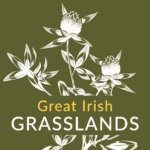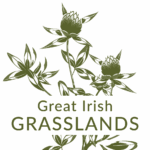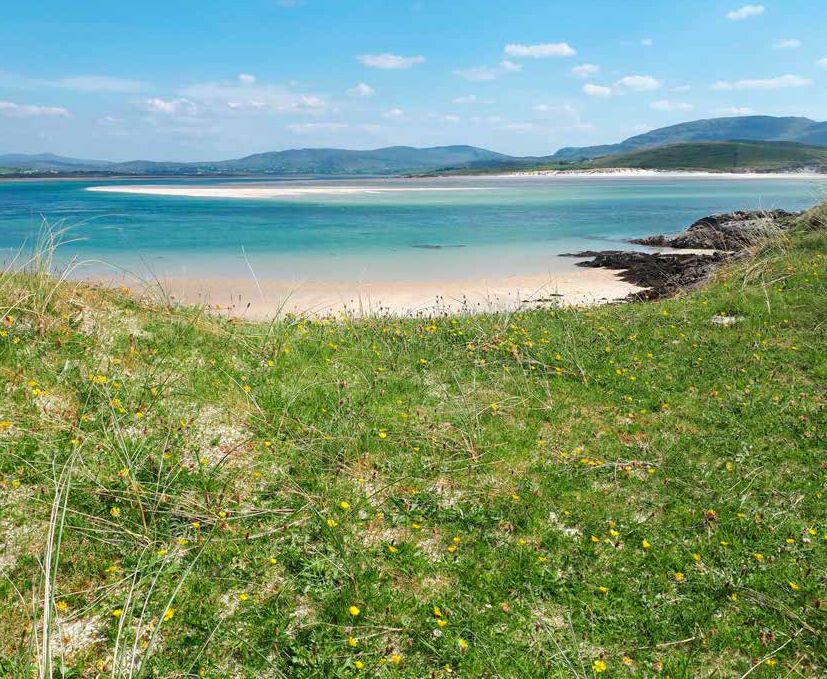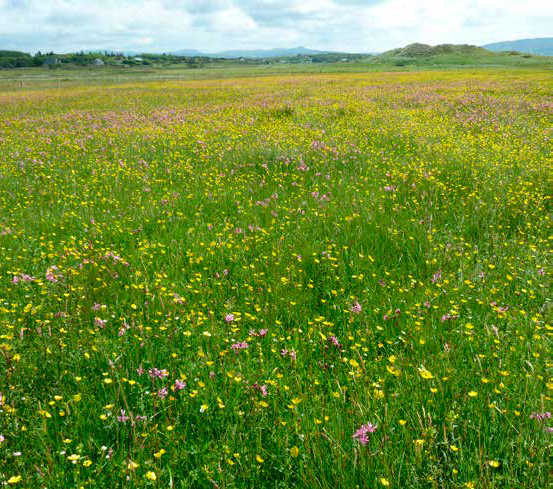Winter grazing with cattle on fixed dunes and machair is ideal for floral diversity. After the stock are removed, plants can grow, flower and set seed, resulting in a succession of wildflowers. In May, Early-purple Orchids appear in their 1,000’s, followed by a beautiful variety of Early Marsh-orchid in June. In mid-summer, rarer species appear like Dense-flowered Orchid, Bee Orchid and the well-camouflaged Frog Orchid. Showier are the Marsh Helleborine and Fragrant-orchids. And it’s not only orchids – Grass-of-Parnassus, Devil’s-bit Scabious and Field Gentian flower in August, signalling the end of summer.
As well as dunes and machair, other important grassland types occur, such as ‘Species-rich Calcareous Grasslands’ and ‘Molinia Meadows’ (both listed for protection on Annex 1 of the EU Habitats Directive). The combination of acidic bedrock, with alkaline sand, interspersed with wet peaty hollows, over undulating ground, makes every corner worth exploring for wildlife. For example, the protected invertebrates Marsh Fritillary and marsh snail, Vertigo geyeri, are found here, as well as a wealth of breeding waders.
NPWS have recognized the importance of the area since the 1980s, having bought 385 ha of land around the Lough. A number of private farmers are involved in a results-based agri-environment scheme (NPWS Farm Plan Scheme), in which land parcels are scored for floral diversity each summer, with payments linked to habitat quality.



